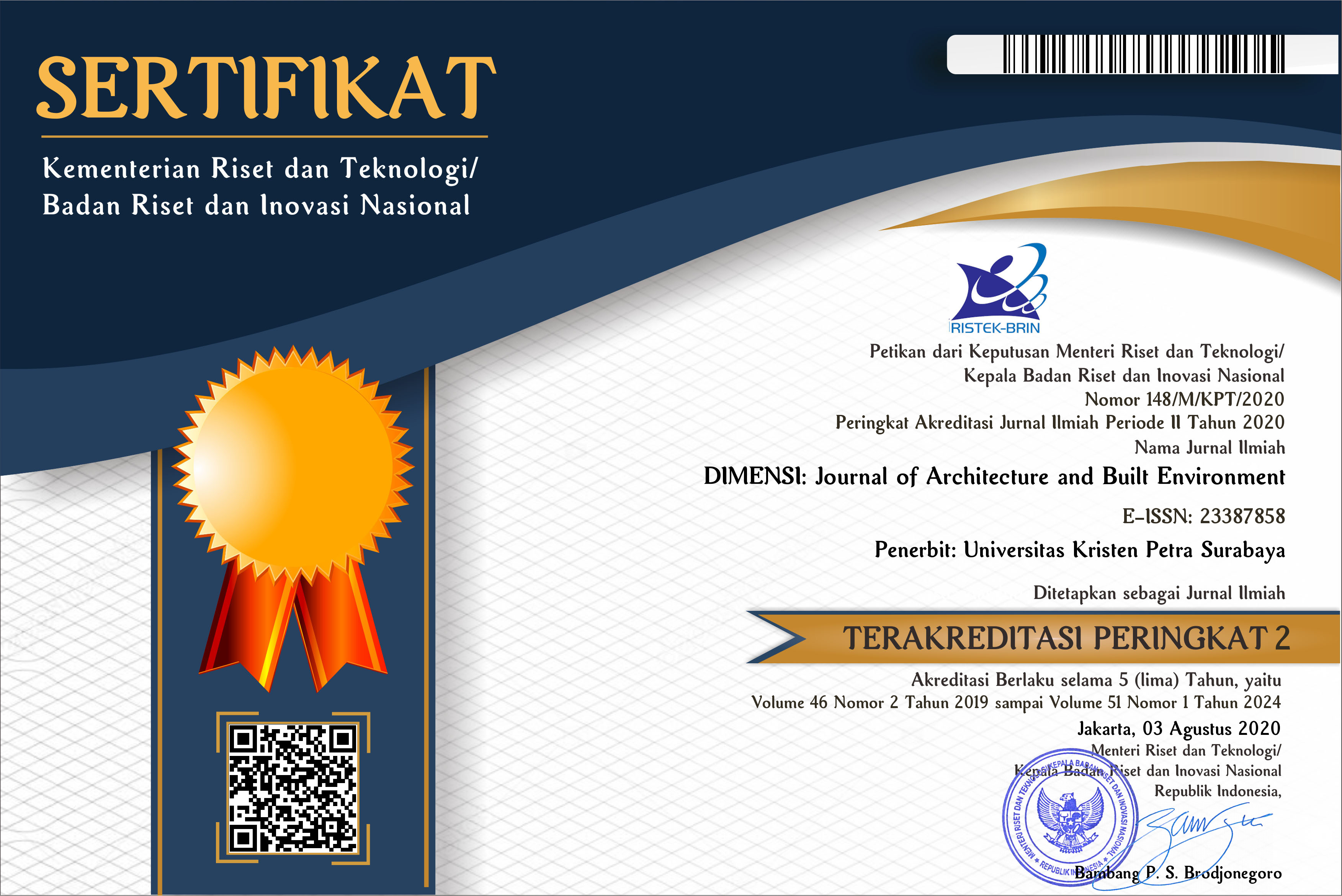THE MORPHOLOGICAL FRAMEWORK OF THE CHINESE AND THE EUROPEAN DISTRICTS IN SURABAYA, 1787-2005
 :
:
https://doi.org/10.9744/dimensi.38.1.1-14
Keywords:
The morphological framework, the Chinese and the European districtAbstract
Recently, the phenomena of economic boom during the 1990s have led to the physical restructuring within the old centre of Surabaya. The changes is inevitable, thus the real issue is how to find the elements of persistent, constraining development to some degree that could be applied to influence future development. The objective of the research is to understand the impact of intervention, and to find the typo-morphological framework in the European and the Chinese quarters, from 1787 to 2005 for future development. A synchronic and a diachronic method is applied to understand the old town centre historical development, and the relationship between building type and urban fabric. The result shows three different degrees of persistent. The town plan of the Chinese and the European districts show a notable persistence. However the land utilization is less persistent especially in the European district such as the first and the second city wall were replaced by roads, and the first and the second fort were replaced by open space and residential uses. Finally, the buildings fabric shows a drastic change such as most of the nineteenth century Indische buildings have been replaced by the 1920s modern buildings.Downloads
Download data is not yet available.
Downloads
Published
2012-01-24
How to Cite
Kwanda, T. (2012). THE MORPHOLOGICAL FRAMEWORK OF THE CHINESE AND THE EUROPEAN DISTRICTS IN SURABAYA, 1787-2005. DIMENSI (Journal of Architecture and Built Environment), 38(1), 1-14. https://doi.org/10.9744/dimensi.38.1.1-14
Issue
Section
Articles
License
Authors who publish with this journal agree to the following terms:
- Authors retain copyright and grant the journal right of first publication with the work simultaneously licensed under a Creative Commons Attribution License that allows others to share the work with an acknowledgement of the work's authorship and initial publication in this journal.
- Authors are able to enter into separate, additional contractual arrangements for the non-exclusive distribution of the journal's published version of the work (e.g., post it to an institutional repository or publish it in a book), with an acknowledgement of its initial publication in this journal.
- Authors are permitted and encouraged to post their work online (e.g., in institutional repositories or on their website) prior to and during the submission process, as it can lead to productive exchanges, as well as earlier and greater citation of published work (See The Effect of Open Access).

















